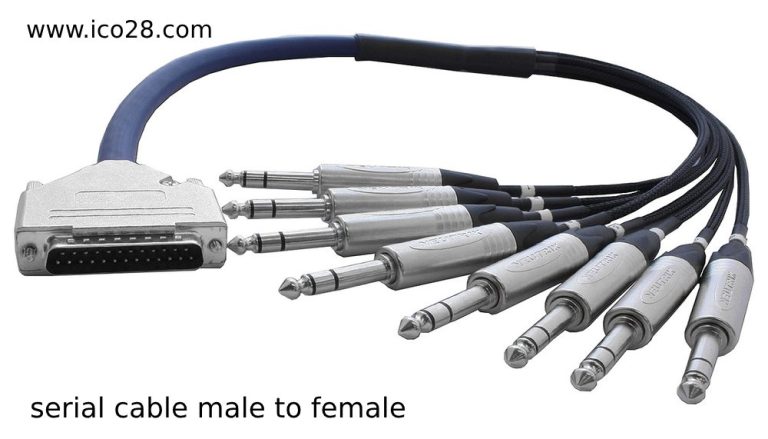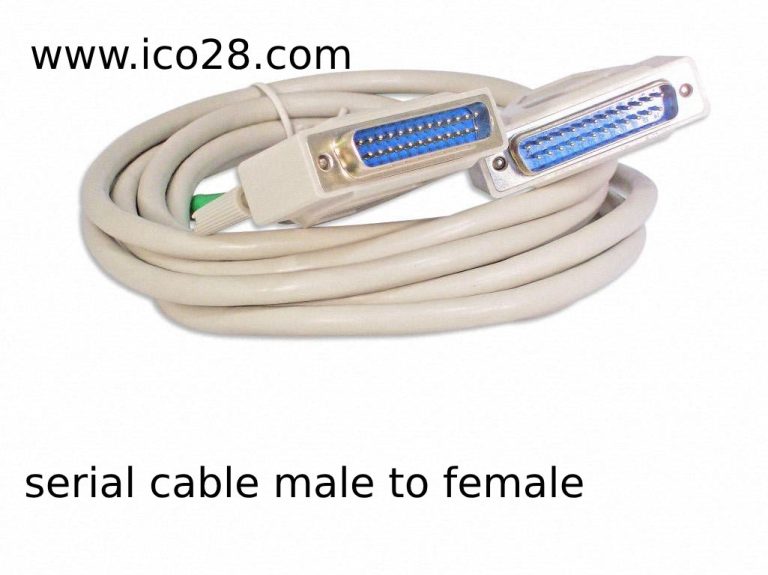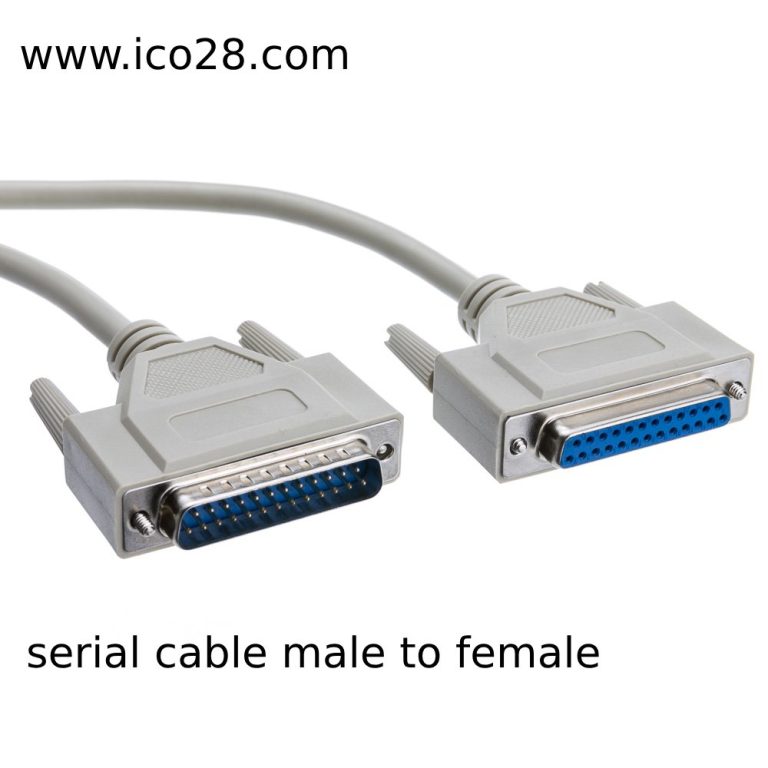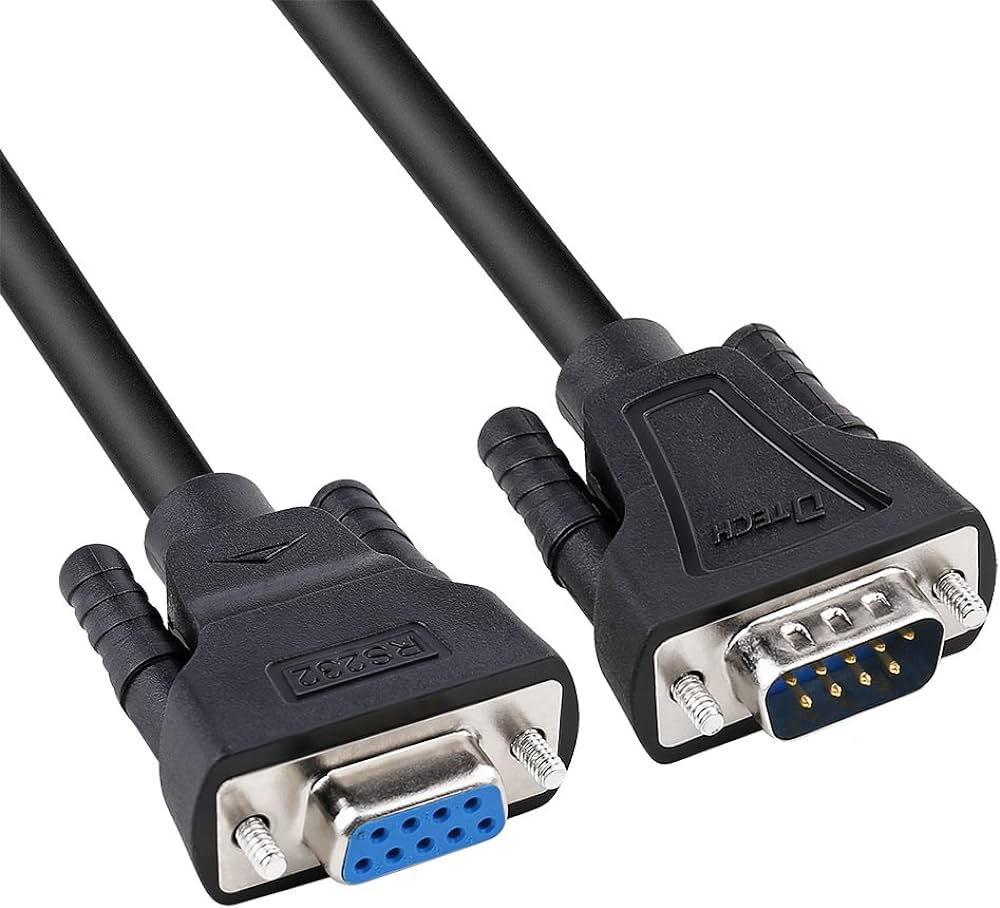I. Introduction
A. Importance of Serial Cable Connections
Serial cables provide reliable and secure data transmission. And provide greater compatibility between different hardware platforms.
B. Overview of male and female configurations
A popular serial wiring design is male-to-female, which places a male connection on one end of the cable and a female connector on the other. This setup makes it simple to connect to ports or interfaces that are exclusive to a given gender and to integrate seamlessly with a variety of devices. Female connectors include slots or sockets to hold the protruding pins or plugs that are often found on male connectors.
C. Purpose of connector optimization
The purpose is to ensure efficient and reliable data transmission between devices.
II. Understanding Male and Female Serial Cables
A. Definition and Construction
A connection having a male connector (often in the form of a pin or plug) on one end of the cable and a female connector (sometimes in the form of a socket or slot) on the other is known as a male-to-female serial cable configuration.
B. Main Components and Their Functions
Insulation, shielding, a male connection, and a female connector are needed for the creation of a male-to-female serial cable. The female connector contains slots or sockets for these pins, while the male connector usually consists of plugs or pins that are covered by a case. Electrical impulses can go between devices more readily thanks to the conductors in the cable, and electrical safety is guaranteed by the insulation that protects these signals from interference. In order to improve signal integrity and dependability and to shield the signal from outside electromagnetic interference, shielding is sometimes made of metal foil or braid.
C. Applications and Use Cases

Male-to-female cable assemblies are commonly used in network equipment such as switches, routers, and serial consoles to connect devices. In industrial automation applications, serial connections enable sensors, actuators, PLCs, and other control devices to exchange data. In the telecommunications industry, serial cables are used to link routers, modems, and other communication devices.
III. Factors affecting communication
A. Signal loss and attenuation
Electrical signals lose energy over distance as they encounter resistance while passing through cable conductors. This is referred to as “signal loss.” Signal attenuation is caused by a number of variables, including the frequency of the transmitted signals, conductor material, and cable length.

B. Impedance Matching
Impedance matching is required to improve signal transmission between serial-connected devices. An impedance is the resistance offered by a circuit to the flow of alternating current (AC). Communication issues and signal deterioration can be caused by mismatched impedance between the attached devices and the cable, resulting in reflections and signal distortion.
C. Shielding and interference
Shielding is essential for keeping signals intact and preventing external electromagnetic interference (EMI), which can damage serial cabling connections and disrupt communications. Electrical wires, motors, and electronic gadgets are all potential sources of electromagnetic interference (EMI). These devices have the ability to emit electromagnetic fields, causing nearby lines to take up undesired signals.
IV. Methods for Optimizing Connectivity
A. Proper Installation Techniques
Care should be taken when routing cables to prevent abrupt bends or twists that could weaken the signal. Furthermore, arranging and securely placing cables is ensured by using cable management equipment like trays and ties, which lowers the possibility of unintentional damage or disconnection.
B. Upgrading Cable Quality
Enhancing connection and future-proofing network infrastructure can be achieved by upgrading cable quality proactively. Superior conductive materials, shielding, and insulation provided by higher-grade cables lessen signal loss and interference susceptibility.
V. Case Studies and Practical Applications
A. Real-world Examples of Efficient Serial Cable Setups
Effective serial cable configurations are essential to many different industries because they enable dependable data transfer in a wide range of applications. For example, in the industrial industry, serial connections are frequently used by programmable logic controllers (PLCs) to interface with control systems and other machinery. Manufacturers may guarantee flawless coordination between various components, optimizing manufacturing processes and avoiding downtime, by putting into practice well-designed serial cable installations.
B. Industries Benefiting from Optimized Connections
For example, electronic health records (EHRs) and telemedicine solutions in the healthcare industry depend on optimal connections. Similar to this, safe transaction processing and high-frequency trading (HFT) in the financial sector depend on optimal connections. Optimized connections allow financial organizations to execute trades quickly and sustain competitive advantages in volatile markets by reducing latency and guaranteeing dependable data delivery.
VI. Future Trends and Technologies
A. Emerging Innovations in Serial Cable Technology
There is ongoing research into the integration of intelligent features such as self-diagnosis and adaptive signal processing, which empower serial cables to dynamically optimize performance based on prevailing conditions.
B. Potential Impact on Connectivity and Performance
Rapid advancements in serial cable technology have the potential to completely transform performance and communication in a number of different areas. Advanced serial connections increase signal integrity and allow larger data transmission rates, which can result in faster and more effective communication between devices and systems.
C. Forecasts for the Future of Serial Cable Efficiency
Experts in the field predict a move toward standards like Thunderbolt and USB4, which provide more versatility and higher bandwidth, allowing for seamless interaction between a variety of devices and peripherals.

VII. Conclusion
A. Recap of Key Findings
Lorem ipsum dolor sit amet, consectetur adipiscing elit. Ut elit tellus, luctus nec ullamcorper mattis, pulvinar dapibus leo.
B. Importance of Prioritizing Connectivity Optimization
Improving connectivity is a strategic need for businesses looking to stay competitive in the modern digital environment, not just a technical one. Businesses may increase productivity, optimize operations, and provide customers with better services by giving connectivity optimization first priority.
C. Closing Remarks on the Significance of Serial Cable Male to Female Connections
In the fields of consumer electronics, telecommunications, and industrial automation, male to female serial cable connectors are essential for creating dependable connections between devices. In order to propel growth and facilitate smooth communication in a globalized society, it is critical that we acknowledge and value these foundational ties as we consider the future of connectivity.
